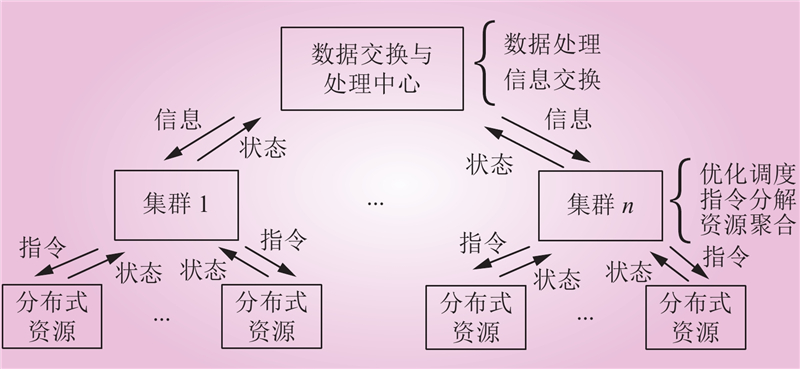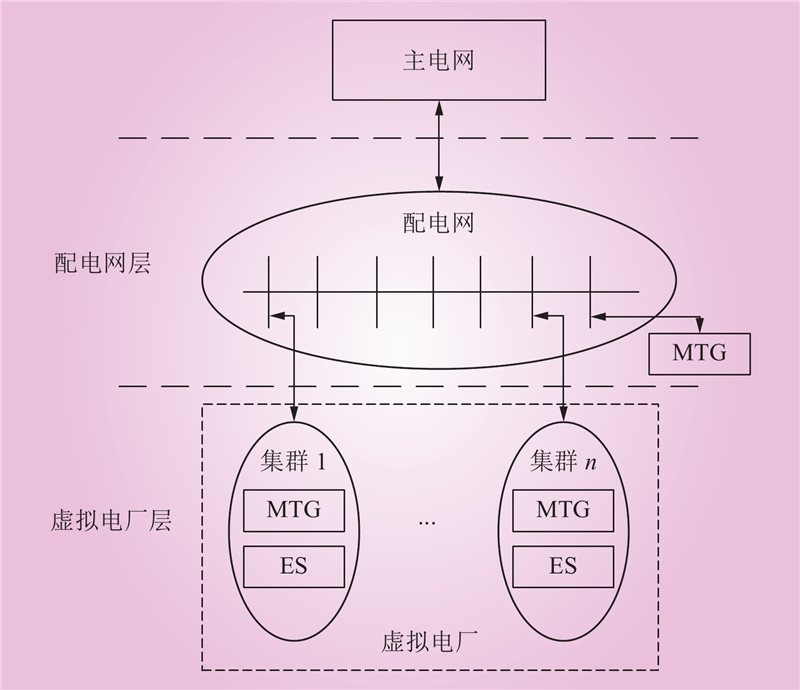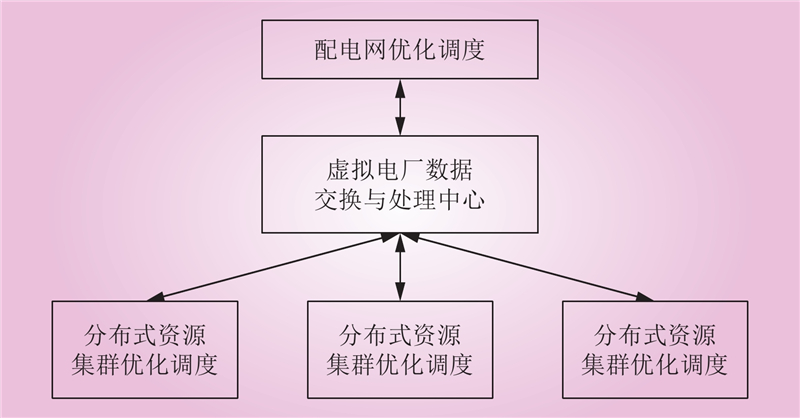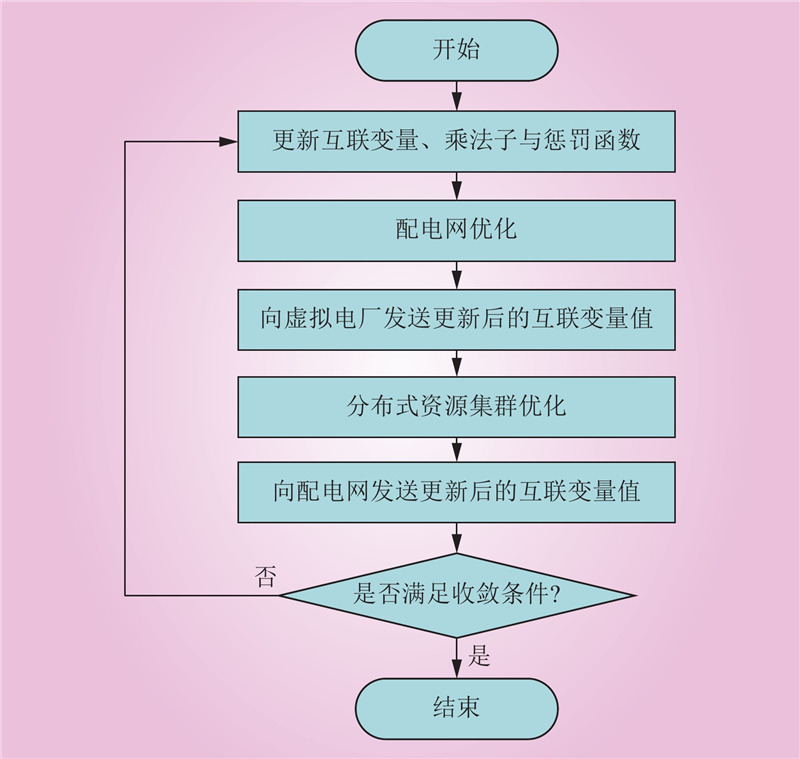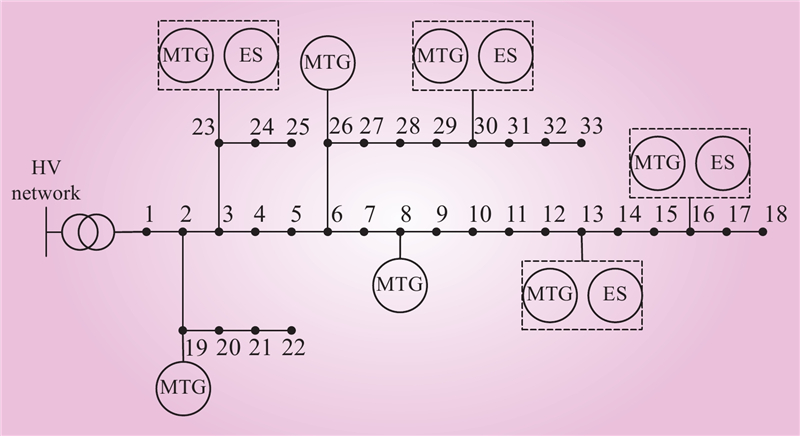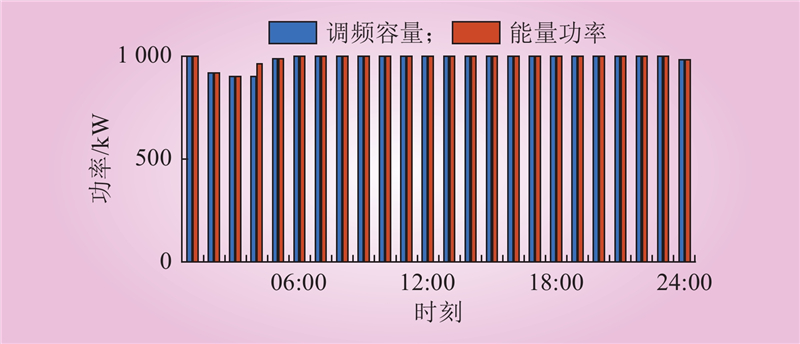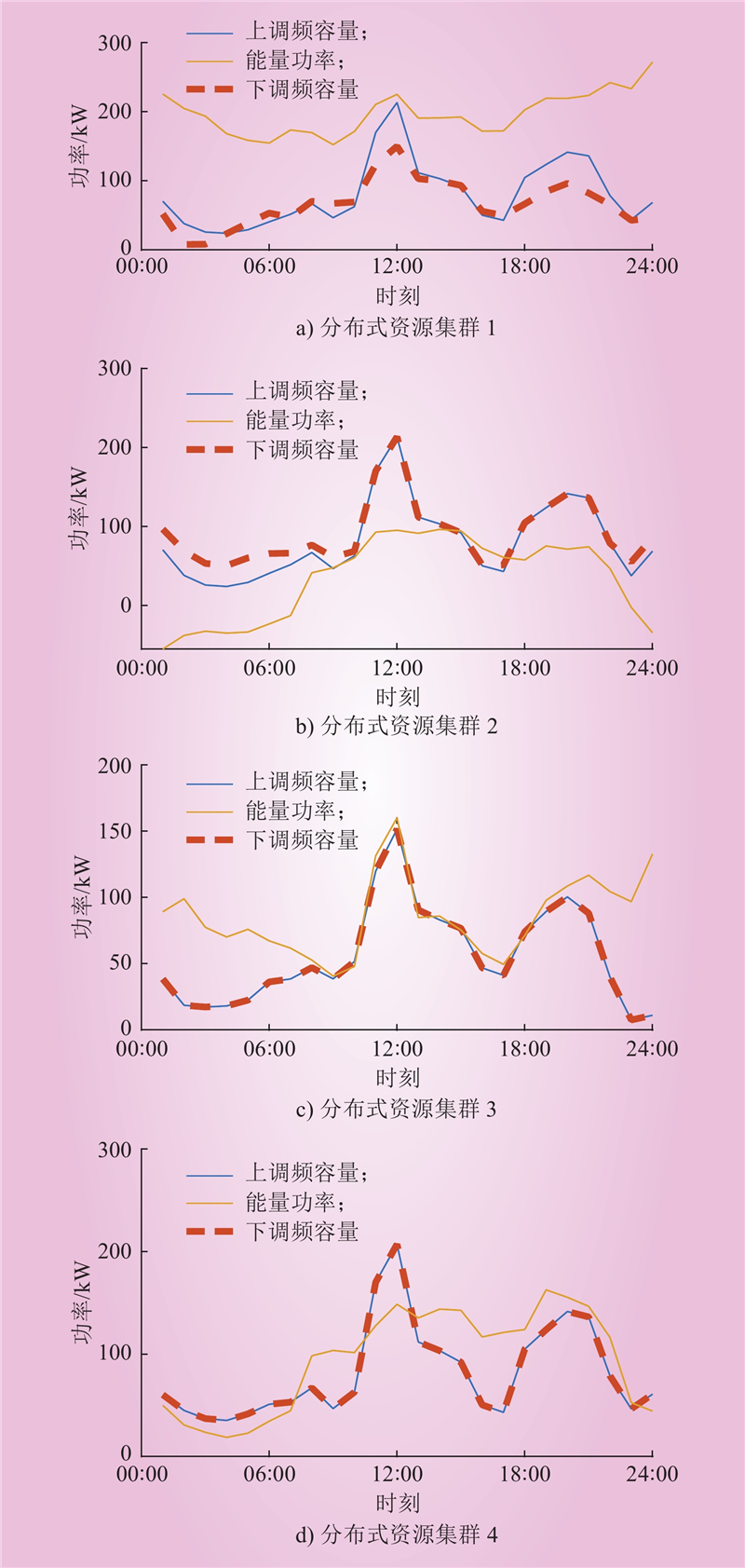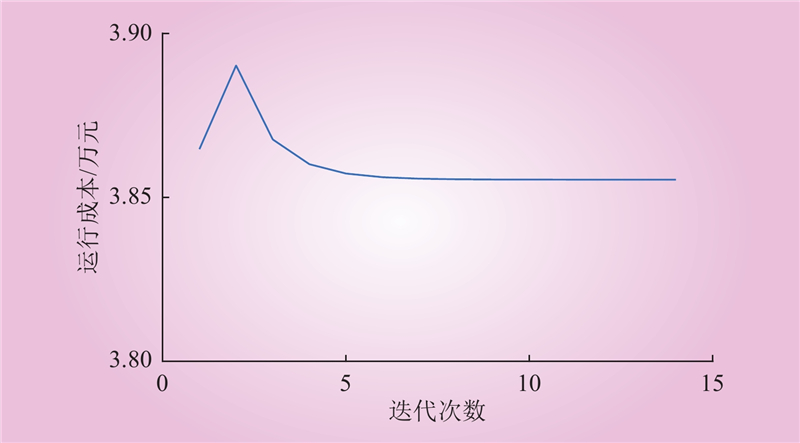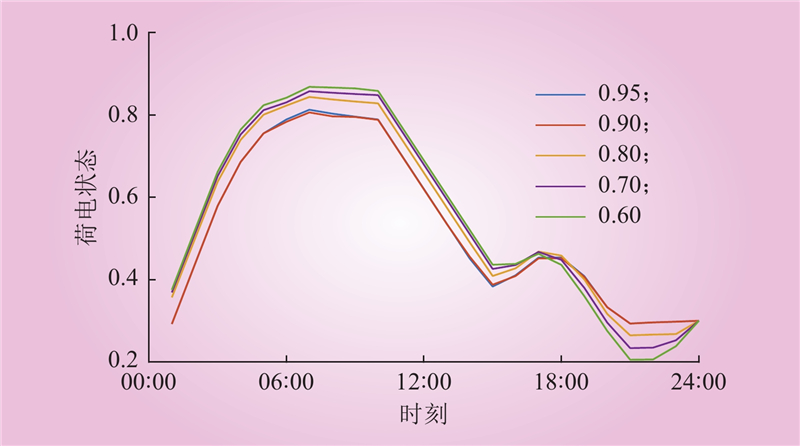| 1 |
田军强. 新能源发电与分布式发电及其对电力系统的影响[J]. 通信电源技术, 2019, 36 (12): 131- 132.
|
|
TIAN Junqiang. New energy generation and distributed generation and their influence on power system[J]. Telecom Power Technology, 2019, 36 (12): 131- 132.
|
| 2 |
贾宏杰, 王梓博, 余晓丹, 等. 城市园区微网系统端对端能量交易技术研究现状与展望[J]. 高电压技术, 2022, 48 (7): 2453- 2468.
|
|
JIA Hongjie, WANG Zibo, YU Xiaodan, et al. State-of-the-art analysis and perspectives for peer-to-peer energy trading technology in urban community microgrid system[J]. High Voltage Engineering, 2022, 48 (7): 2453- 2468.
|
| 3 |
吴文传, 张伯明, 孙宏斌, 等. 主动配电网能量管理与分布式资源集群控制[J]. 电力系统自动化, 2020, 44 (9): 111- 118.
|
|
WU Wenchuan, ZHANG Boming, SUN Hongbin, et al. Energy management and distributed energy resources cluster control for active distribution networks[J]. Automation of Electric Power Systems, 2020, 44 (9): 111- 118.
|
| 4 |
WANG Z Y, CHEN B K, WANG J H, et al. Decentralized energy management system for networked microgrids in grid-connected and islanded modes[J]. IEEE Transactions on Smart Grid, 2016, 7 (2): 1097- 1105.
DOI
|
| 5 |
KIM H M, MICHELENA N F, PAPALAMBROS P Y, et al. Target cascading in optimal system design[J]. Journal of Mechanical Design, 2003, 125 (3): 474- 480.
DOI
|
| 6 |
周晓倩, 艾芊. 配电网与多微网联合分布式鲁棒经济调度[J]. 电力系统自动化, 2020, 44 (7): 23- 30.
|
|
ZHOU Xiaoqian, AI Qian. Combined distributed robust economic dispatch of distribution network and multiple microgrids[J]. Automation of Electric Power Systems, 2020, 44 (7): 23- 30.
|
| 7 |
姚璐, 赵维兴, 李舒佳, 等. 基于目标级联分析法的分布式主体可交易能源模型[J]. 电力自动化设备, 2021, 41 (9): 256- 264.
|
|
YAO Lu, ZHAO Weixing, LI Shujia, et al. Transactive energy model of distributed agents based on analytical target cascading[J]. Electric Power Automation Equipment, 2021, 41 (9): 256- 264.
|
| 8 |
DU P L, CHEN Z, CHEN Y X, et al. A Bi-level linearized dispatching model of active distribution network with multi-stakeholder participation based on analytical target cascading[J]. IEEE Access, 2019, 7, 154844- 154858.
DOI
|
| 9 |
华昊辰, 李宇童, 王同贺, 等. 一种基于混合随机H2/H∞方法的能源互联网边缘计算系统控制策略[J]. 中国电机工程学报, 2020, 40 (21): 6875- 6885.
|
|
HUA Haochen, LI Yutong, WANG Tonghe, et al. A novel stochastic mixed H2/H∞ control strategy for energy Internet edge computing system[J]. Proceedings of the CSEE, 2020, 40 (21): 6875- 6885.
|
| 10 |
赵冬梅, 徐辰宇, 陶然, 等. 多元分布式储能在新型电力系统配电侧的灵活调控研究综述[J]. 中国电机工程学报, 2023, 43 (5): 1776- 1799.
|
|
ZHAO Dongmei, XU Chenyu, TAO Ran, et al. Review on flexible regulation of multiple distributed energy storage in distribution side of new power system[J]. Proceedings of the CSEE, 2023, 43 (5): 1776- 1799.
|
| 11 |
ZHANG B, YAN X W, LI D X, et al. Stable operation and small-signal analysis of multiple parallel DG inverters based on a virtual synchronous generator scheme[J]. Energies, 2018, 11 (1): 203.
DOI
|
| 12 |
董璐, 边晓燕, 周波, 等. 计及调频备用效益的主动配电网分层分布式协调优化调度[J]. 电力自动化设备, 2023, 43 (1): 55- 63.
|
|
DONG Lu, BIAN Xiaoyan, ZHOU Bo, et al. Hierarchical distributed coordinated optimal dispatch of active distribution network considering frequency regulation reserve benefits[J]. Electric Power Automation Equipment, 2023, 43 (1): 55- 63.
|
| 13 |
马恒瑞, 王波, 高文忠, 等. 考虑调频补偿效果的区域综合能源系统调频服务优化策略[J]. 电力系统自动化, 2018, 42 (13): 127- 135.
|
|
MA Hengrui, WANG Bo, GAO Wenzhong, et al. Optimization strategy for frequency regulation service of regional integrated energy systems considering compensation effect of frequency regulation[J]. Automation of Electric Power Systems, 2018, 42 (13): 127- 135.
|
| 14 |
张圣祺, 袁蓓, 季振东, 等. 基于分布式控制原理的电池储能系统二次调频控制[J]. 电工技术学报, 2019, 34 (S2): 637- 645.
|
|
ZHANG Shengqi, YUAN Bei, JI Zhendong, et al. A secondary frequency control based on the distributed control theory considering battery energy storage systems[J]. Transactions of China Electrotechnical Society, 2019, 34 (S2): 637- 645.
|
| 15 |
谭俊丰, 杨苹, 张凡, 等. 考虑能量-辅助服务下的园区综合能源系统多时间尺度优化模型[J]. 中国电力, 2022, 55 (10): 100- 111.
|
|
TAN Junfeng, YANG Ping, ZHANG Fan, et al. Multi-time scale optimization dispatch model of integrated energy system considering energy-auxiliary services[J]. Electric Power, 2022, 55 (10): 100- 111.
|
| 16 |
WANG Z Y, CHEN B K, WANG J H, et al. Coordinated energy management of networked microgrids in distribution systems[J]. IEEE Transactions on Smart Grid, 2015(6): 45–53.
|
| 17 |
吴洲洋, 艾欣, 胡俊杰. 需求侧灵活性资源参与调频辅助服务的备用优化与实时调度[J]. 电力系统自动化, 2021, 45 (6): 148- 157.
|
|
WU Zhouyang, AI Xin, HU Junjie. Reserve optimization and real-time scheduling of frequency regulation ancillary service with participation of flexible resource on demand side[J]. Automation of Electric Power Systems, 2021, 45 (6): 148- 157.
|
| 18 |
湛归, 殷爽睿, 艾芊, 等. 智能楼宇型虚拟电厂参与电力系统调频辅助服务策略[J]. 电力工程技术, 2022, 41 (6): 13- 20, 57.
|
|
ZHAN Gui, YIN Shuangrui, AI Qian, et al. A strategy for smart building-based virtual power plants participating in frequency regulation auxiliary service[J]. Electric Power Engineering Technology, 2022, 41 (6): 13- 20, 57.
|
| 19 |
吴洲洋, 艾欣, 胡俊杰, 等. 基于充电行为预测的电动汽车参与系统调频备用: 容量挖掘与风险评估[J]. 电力自动化设备, 2022, 42 (4): 18- 26.
|
|
WU Zhouyang, AI Xin, HU Junjie, et al. EVs' participation in system frequency regulation reserve based on charging behavior prediction: capacity mining and risk evaluation[J]. Electric Power Automation Equipment, 2022, 42 (4): 18- 26.
|
| 20 |
AI X, WU Z Y, HU J J, et al. Robust operation strategy enabling a combined wind/battery power plant for providing energy and frequency ancillary services[J]. International Journal of Electrical Power & Energy Systems, 2020, 118, 105736.
|
| 21 |
WU H Y, SHAHIDEHPOUR M, LI Z Y, et al. Chance-constrained day-ahead scheduling in stochastic power system operation[J]. IEEE Transactions on Power Systems, 2014, 29 (4): 1583- 1591.
DOI
|


